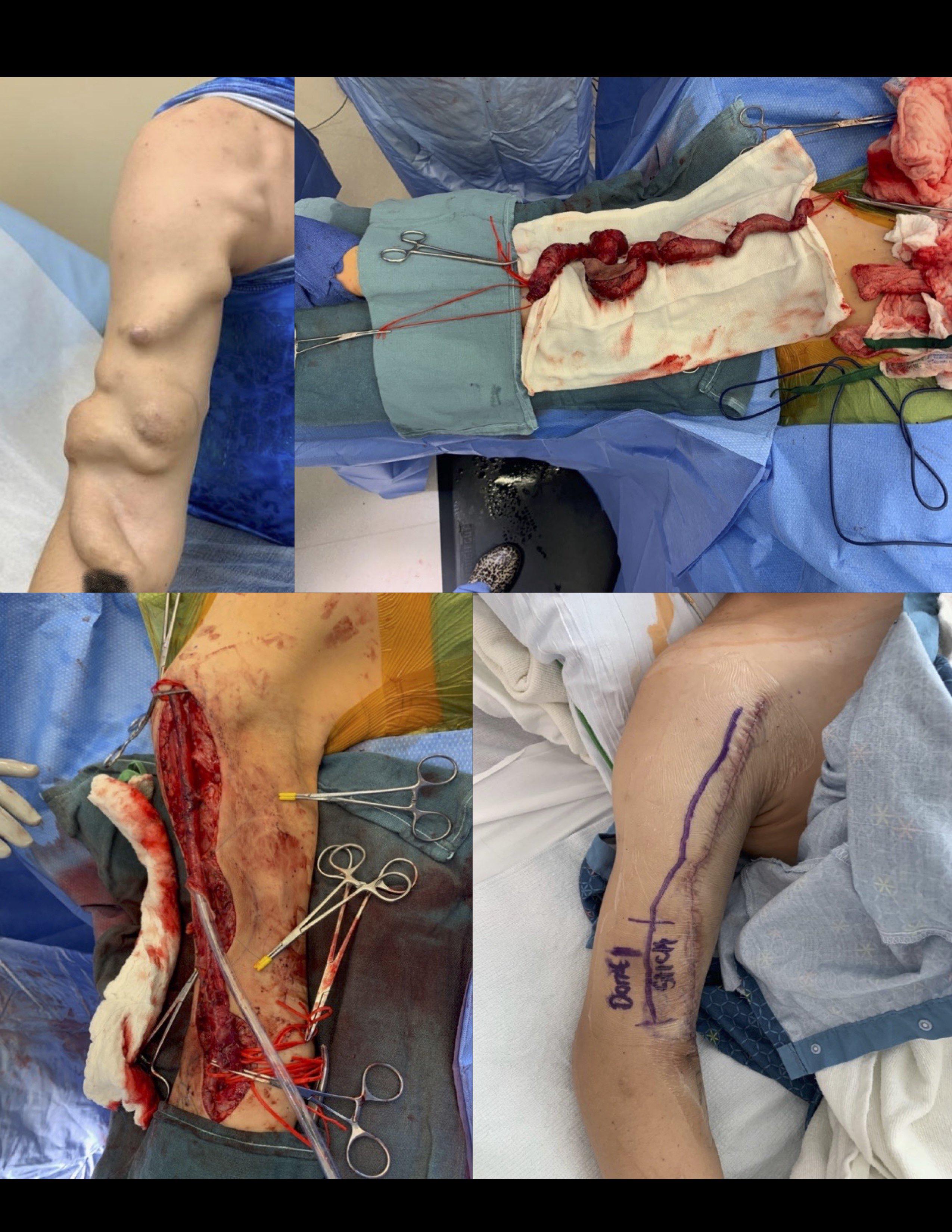DEMOGRAPHICS: A 24-year-old male with ESRD due to posterior urethral valve status-post living donor renal transplant at 2 years of age, progressive graft failure currently on HD, and non-ischemic cardiomyopathy with high-output heart failure (EF 30%) and implanted defibrillator.
HISTORY:The patient presented with a history of non-matured left radiocephalic fistula and a severely aneurysmal right brachiocephalic fistula with flow volumes > 2500 ml/min and high-output heart failure. Fistulogram revealed high-grade outflow stenoses.
PLAN: The patient was taken to the operating room for fistula revision, outflow intervention, and banding if flow volumes failed to improve following repair. The fistula was dissected along the entirety of its length and a long segment venotomy was made along the anterior aspect of the fistula. The most severely aneurysmal portions were resected. The transected edges were brought together and anastomosed in an end-to-end fashion, using a 24 French chest tube as a size guide. The revised fistula was then transposed laterally under a skin flap. A venoplasty was performed on the outflow stenoses, with good resolution. Intraoperative duplex demonstrated flow volumes had decreased to 700-1200 mL/min, therefore no further intervention was indicated. The fistula was used immediately postoperatively. No tunneled dialysis catheter was required. At one year follow up, the patientís flow volumes have remained stable, he continues to dialyze through the fistula, and has had an improvement in his EF to 55%.
DISCUSSION: Aneurysmal degeneration is a known complication of autologous hemodialysis access. For short-segment aneurysms, open or endovascular options exist for management. No definitive recommendations exist for long-segment fistulae. Reports vary, with some providers simply ligating the fistula and others using prosthetic material for repair. High output heart failure and pulmonary hypertension are known complications of a large dialysis-related fistula. This is a known but uncommon phenomenon that physicians need to be aware of. Few reports exist, with most patients undergoing fistula ligation with improvement in symptoms and hemodynamics. We report improvement in heart failure symptoms and improved ejection fraction with revision of a massively aneurysmal fistula without the need for prosthetic use or placement of a dialysis catheter for a dialysis-dependent patient. 